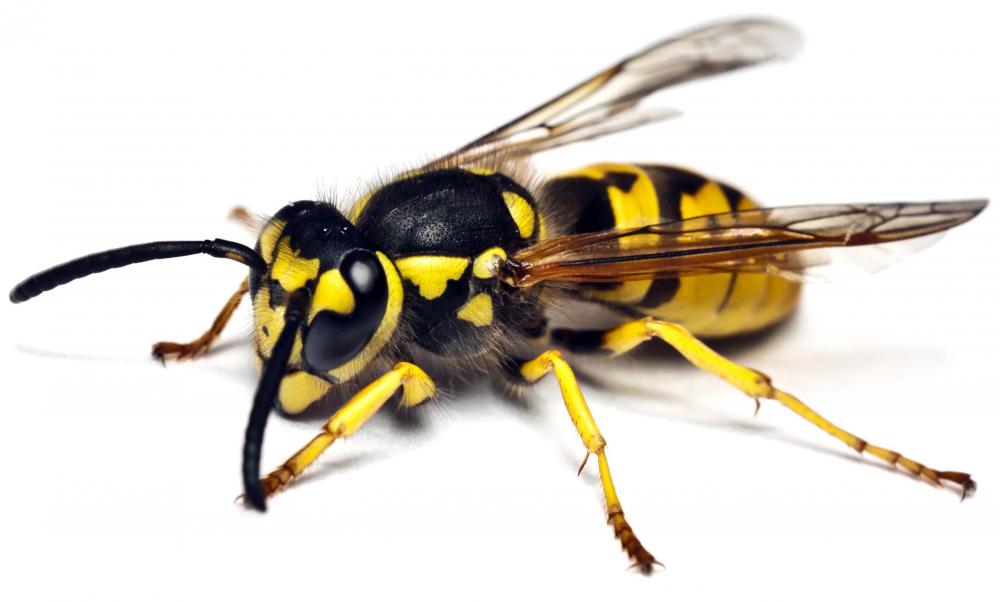At WiseGEEK, we're committed to delivering accurate, trustworthy information. Our expert-authored content is rigorously fact-checked and sourced from credible authorities. Discover how we uphold the highest standards in providing you with reliable knowledge.
What Are the Signs of an Allergic Reaction to a Wasp Sting?
Signs of an allergic reaction to a wasp sting include local reactions, such as raised red itchy welts on the skin and pain at the sting site, as well as systemic reactions, such as nausea and vomiting, diarrhea, and abdominal cramps. In addition, coughing, difficulty breathing, and wheezing can also occur. In extreme cases, a condition known as anaphylactic reaction can occur causing swelling of the throat, tongue, and lips. This is a life-threatening situation and requires immediate emergency care.
Treating an allergic reaction to a wasp sting depends upon the severity of the reaction. If the patient is having trouble breathing, getting him to the emergency room is the first priority. When only a local allergic reaction to a wasp sting is present, scraping as much of the stinger out as possice the amount of venom that gets absorbed into the skin. In people who are not allergic to wasp stings, treatment can be limited to basic home remedies and first aid.

After the stinger has been removed, the area should be washed thoroughly with soap and water. Applying ice to allergic reaction to a wasp sting will help reduce pain and inflammation. It is important that ice not be directly applied to the skin so that further tissue damage does not occur. In addition, taking an over-the-counter pain reliever may help relieve discomfort, while taking an antihistamine may provide relief from itching.

A tetanus shot may be required if the last booster immunization injection has not been given in the last 10 years. Although tetanus is rare, it is still a possibility. People who have been previously stung by a wasp, and who have had a severe allergic reaction should discuss the possibility of carrying an emergency allergy kit that includes an EpiPen®. These pen-like devices are filled with epinephrine, which can counteract the effects of venom and prevent a life-threatening event.

Antibiotic ointment is another effective treatment for an allergic reaction to a wasp sting. Although the area likely will not become infected, it is prudent to apply an antibiotic topical preparation after the area has been cleansed to discourage the growth of bacteria. Rarely, a person may get repeatedly stung by a number of wasps. In these cases, admittance in the hospital for a day or two may be recommended so the patient can be observed for a delayed allergic reaction.
AS FEATURED ON:
AS FEATURED ON:














Discuss this Article
Post your comments